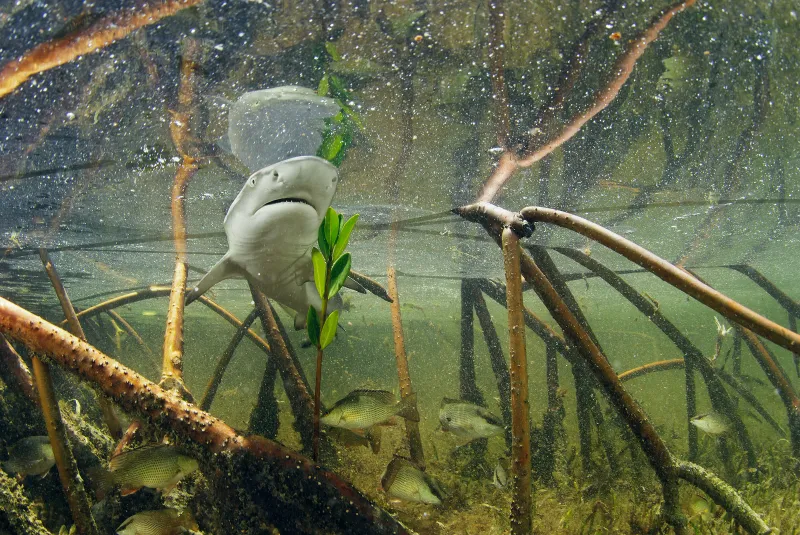Young Lemon Shark Swims Through Mangroves

A lemon shark pup swims through a shallow mangrove forest off the coast of Bimini Island in the Bahamas in this image captured by National Geographic photojournalist Brian Skerry.
For nearly 30 years, Skerry has been swimming with and photographing sharks, including great whites, tigers, bulls, blacktips, and great hammerheads all over the world. In his first blog post for the Smithsonian Ocean Portal, "Swimming with Sharks," Skerry reflects on these exhilarating experiences.
Due to its large size, adaptability in captivity, and once abundant populations, the lemon shark (Negaprion brevirostris) has been the subject of extensive laboratory and field studies. Female sharks deposit their pups in shallow, coastal waters, and they live in these reef and mangrove nurseries for up to four years. As adults, they move to deeper waters of up to about 90 meters (295 feet) deep. They are found in the subtropical waters of the Atlantic from Florida to Brazil, Mexico's western coast, and possibly areas on the West African Coast. Habitat destruction and loss in the coastal nurseries pose a serious threat to the sharks, in addition to commercial and recreational fisheries and mortality from bycatch. The International Union for the Conservation of Nature (IUCN) has classified the lemon shark's status as "Near Threatened."

